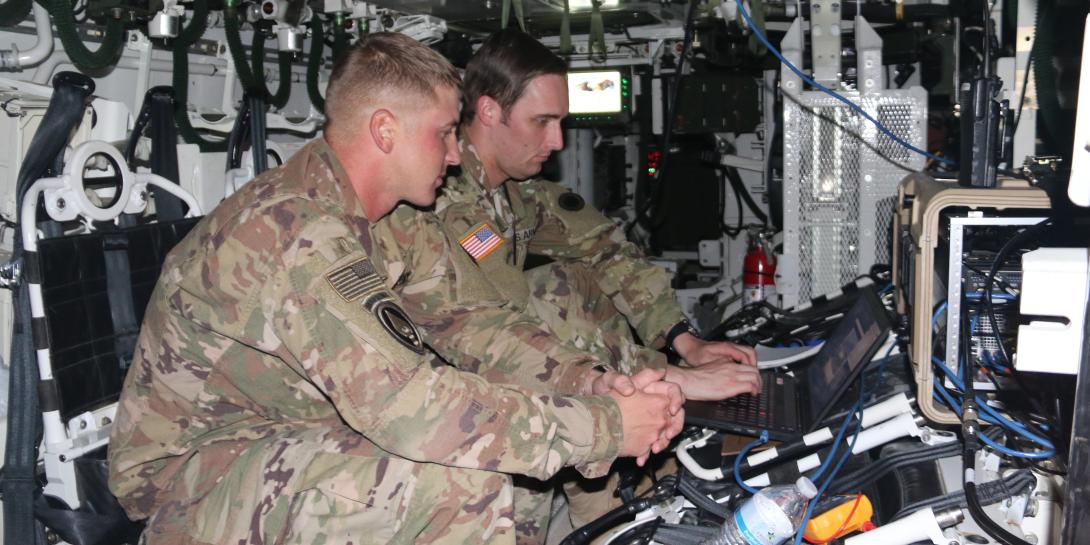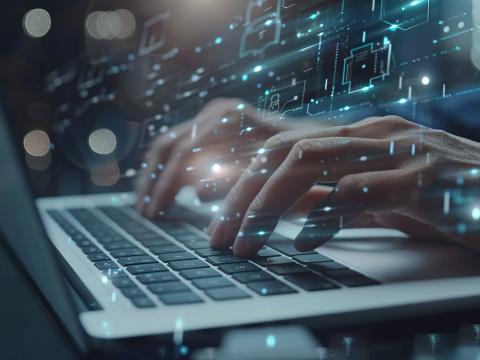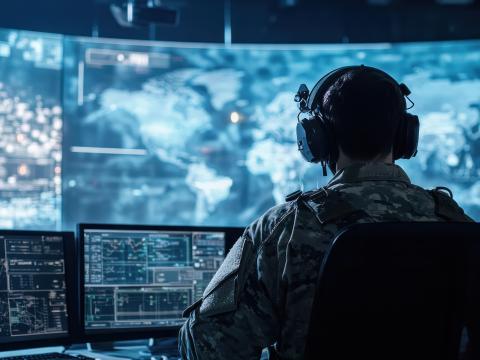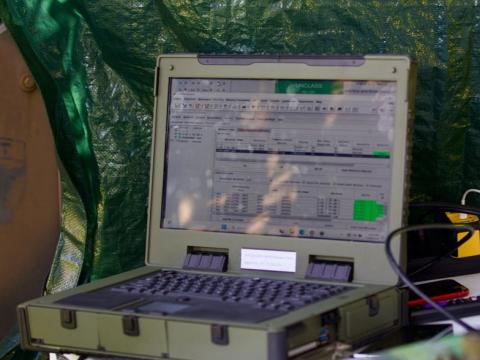The Army Evolves Its Formations for Cyber and Electronic Warfare
The U.S. Army continues to improve the cyberspace and electronic warfare capabilities of its soldiers. A key part of this effort are the changes the service is making to its Cyber Corps formations, and how they organize and add cyberspace and electronic warfare (EW) personnel to their ranks, said Brig. Gen. Paul Craft, USA, chief of cyber and commandant of the U.S. Army Cyber School headquartered at Fort Gordon, Georgia.
“We are modernizing our Cyber Corps formations for multidomain operations,” the general said. Gen. Craft—along with leaders from the Army Cyber Center of Excellence, Cyber School and Cyber Branch, which will be covered in a separate SIGNAL article—presented an update on their efforts during an AFCEA TechNet Augusta Webinar on October 20. The webinar, entitled Army Cyber and Electromagnetic Warfare Operators ISO Multi-Domain Operations, was the first in a series of free webinars with Army officials leading up to the TechNet Augusta conference scheduled for January 25-28, 2021.
We are seeing the continued improvement of coordinated EW and cyber capabilities with our new formations, says
— Kimberly Underwood (@Kunderwood_SGNL) October 20, 2020
BG Paul Craft, chief of cyber and commandant of the U.S. Army Cyber School at Fort Gordon, Georgia @USArmy @ArmyChiefCyber #USACyS @ARCYBER #AFCEATechNet pic.twitter.com/Q8P7pR5IqE
“When we started the Cyber Corps, we really only went a few places,” Gen. Craft noted. “The cyber mission force was arranged in very specific locations around the United States. Now, if you want to be in cyber and electronic warfare, that integrated capability, you can go around the world and serve anywhere where the Army is located. And certainly, through the next assignment cycle, you're going to see more and more capability and trained personnel going out to all the locations. And we're very excited about that.”
The newest approved formation is the Cyber Warfare Battalion, also known as the 915th, which is still being formed and will encompass expeditionary cyber capability. “It is aligned and assigned to Army Cyber headquarters, but it has expeditionary cyber teams also known as ECTs that can push into tactical formations to provide additional cyber operations capabilities down to the lowest level, down to the Brigade Combat Teams,” the general clarified.
At the Army service component command level, the service is adding formations with a combination of electronic warfare specialists, officers, warrant officers and noncommissioned officers. “We have also put in cyber warfare officers at each one of these echelons, again, integrating the ‘C’ in CEMA [cyber electronic warfare activities], along with other capabilities that are coming on board, which we’ll discuss in a later TechNet update.”
In addition, the Army has now graduated electronic warfare platoon leaders. “Inside the cyber branch, we did not have platoon leaders,” he clarified. “We had team leaders doing specialty mission sets for offense and defensive cyber operations, but now we actually have now graduated seven platoon leaders that we're pushing out into electronic warfare platoons and companies and CEMA sections.”
Some of those EW platoons and companies—with the new platoon leaders—will be located inside the Army’s military intelligence companies at the BCT level, to integrate military intelligence and electronic warfare at the division level, the general said.
Gen. Craft also provided an update on the status of the information, intelligence, cyber, electronic warfare and space, or I2CEWS detachments, which are at the forefront of the Army’s multidomain operations experimentation. In addition to traditional signals intelligence capabilities, the I2CEWS bring information, intelligence, cyber, electronic warfare and space together and the detachments will plan, synchronize and integrate those capabilities for the service’s multidomain (MDO) task force, the general explained.
The I2CEWS are participating heavily in major theater and global level exercises in order examine MDO processes and operations. “They are working on three big areas,” the general said. “One is the synchronization of all those capabilities at that echelon of operation. Two, is the integration of those capabilities, and how does electronic warfare work with signals intelligence or how does signals and space work together? How do our cyber forces fit within that?”
In the future, the I2CEWS will be commanded by either a Signal Corps officer or a military intelligence officer or a cyber electronic warfare officer, he noted.
At the end of October, Army leaders will meet with the I2CEWS commander to discuss the detachment’s progress. “Many of us are headed out to Joint Base Lewis-McChord just to see that unit in action, understand their challenges and the capabilities that are being designed and developed for them,… and where they need to go to make sure we are giving them the right talent, the right skills and the right training,” he shared.
The remainder of the Technet Augusta Webinar Channel webinars will take place November 17, December 1 and January 12. Click to register.





Comment
Get I2CEWS some developers.
Get I2CEWS some developers. Make current personnel train to be developers or partial operators. Let's get a USCC and PACOM partnership going. There is potential for furthering OCO.
Comments